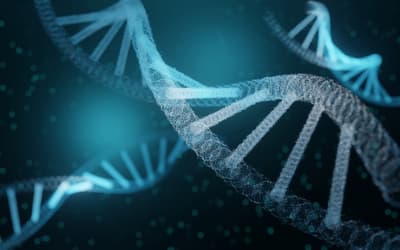
The Place of the Exodus in Egyptian History
pp. 1–9 • Robert M. Porter
Egyptian history will be explored, looking for potential shortenings, with a view to putting the Exodus at the end of the Old Kingdom, a time when Egypt collapsed.
MLACopy
APA
Chicago
${currentCitationStyle} Citation Copied to Clipboard


pp. 1–9 • Robert M. Porter
Egyptian history will be explored, looking for potential shortenings, with a view to putting the Exodus at the end of the Old Kingdom, a time when Egypt collapsed.

pp. 11–20 • Dr. Jerry Bergman
The case for over-design is reviewed focusing on documented cases of normal persons that have exceptional abilities.

pp. 21–23 • A. John M. Osgood
The Egyptian king lists have been arranged sequentially as was common in the ancient world, but they often were listing parallel and with overlapping dynasties.

pp. 25–29 • Change Laura Tan
The required automatic self-linking of monomers for abiogenesis is incompatible with the genetic information coding and decoding system that is necessary for life.

pp. 31–48 • Change Laura Tan
This article argues that it is practically impossible to generate the first DNA (or RNA) template abiotically.

pp. 49–60 • Change Laura Tan
DNA, however long it is and however many genes it can encode, is nothing without the molecular machineries to decode its encoded genes.

pp. 61–82 • Warren H. Johns
This study begins by linking Flood chronology with Creation chronology, which simply has a sequence of seven literal days ending with a sabbath day.

pp. 97–108 • Edward A. Isaacs
Ichnofossil data challenge Hydroplate Theory’s credibility—a theory purporting to explain the global stratigraphic record and its paleontological constituents.

pp. 109–120 • Dr. Jerry Bergman
Details of the Java man fossils were discussed as well as the problem of creating a species from a few bone fragments.

pp. 121–123 • Anne Habermehl
Placing the Exodus at the end of the Old Kingdom of Egypt fits with the biblical narrative, Egyptian history, and the Conquest that followed 40 years later.

pp. 125–127 • Robert M. Porter
It is impossible to run Dynasty 6 of the Old Kingdom in parallel with Dynasty 12 of the Middle Kingdom as some Christian chronologers claim.

pp. 129–130 • A. John M. Osgood
Many agree that biblical chronology is basic to understanding the history of Egypt. However, my placement of the Exodus at 1446 BC has been misunderstood.

pp. 131–137 • Dr. Jerry Bergman
Not even plausible “just-so” stories are proposed to explain how one heart system evolved into a different system. Evolution is unable to explain their origin.

pp. 139–262 • Dr. Andrew A. Snelling
Investigation of the nature of the folding of the Cambrian Tonto Group strata in Grand Canyon necessitates first investigating the petrology of those strata.

pp. 263–267 • Dr. Jerry Bergman
This review of attempts to postulate evolutionary theories for the origin and development of cartilage and the cells that produce cartilage.

pp. 269–276 • Matthew Cserhati
Physicalists are still at a loss as to how to solve the hard problem of consciousness; namely, as to where consciousness comes from.

pp. 277–283 • Dr. Jerry Bergman
In spite of numerous attempts during the past 150 years since Darwin, evolutionists have failed to offer a viable theory of eye evolution.

pp. 285–300 • Dr. Gabriela Haynes
Based on several findings, no reason remains for Archaeopteryx to be classified as anything other than a bird.

pp. 301–337 • James Powell
Only a Flood koine (with a distinctive and historic world navel) can fully explain the close-knit pattern of evidence found across material cultures.

pp. 339–357 • Dr. Phillip W. Dennis
We explore the effect of cosmic voids on the light-travel-time-problem (LTTP) in a young age creationist (YAC) cosmology.

pp. 359–376 • Dr. Danny R. Faulkner
This introduction is the first of five papers on the philosophy of science, in which I discuss what science is perceived to be today, as well as some problems in science education.

pp. 377–390 • Kenneth C. Griffith , et. al.
This series of papers makes the case that a broad consensus of ancient sources speaks in harmony with Ussher’s chronology of the Bible.

pp. 391–404 • Chad Arment
Understanding the relationship between created kinds and Ark kinds is a key issue in creation science, especially as it has bearing on the Flood/post-Flood boundary debate.

pp. 405–426 • Kenneth C. Griffith , et. al.
This paper is the second in the series and continues the process of systematizing the chronology of the ANE using the durations given by the ancient chroniclers.

pp. 427–439 • Donald C. McIntyre
This article will seek to show that the proper genre of Genesis 2:4ff is historical narrative and not mytho-history.

pp. 441–445 • Dr. Daniel Howell
Biological sex is grounded in anatomy, physiology, and genetics. Here, I describe why—biologically—there are only two sexes (= genders) and why true sex reassignment is impossible.